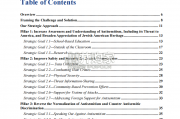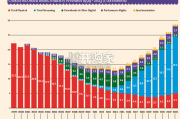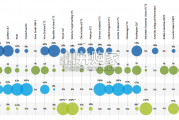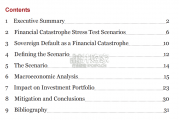Hate and the violence it fuels are on the rise in America. Hate crimes, tar...
2024-05-20 15 英文报告下载
AI provides a breakthrough opportunity to accelerate the design, deployment, and licensing of new energy capacity. Commercial powerplant design and licensing are a multi-year effort that can account for up to 50% of time to market for new energy deployments. DOE estimates the onboarding of 1.6 TW of new solar capacity and 200 GW of new nuclear capacity, while enabling hydrogen, geothermal, critical minerals, and other clean energy resources by 2050, with a cost that could approach trillions of dollars in national investment to meet growing global clean energy demand. Additionally, DOE estimates the need to reduce costs to less than $100/net metric ton of CO2 equivalent for both carbon capture and storage to address carbon pollution. AI has the potential to reduce schedules by approximately 20% across new clean energy designs, with potential savings in the hundreds of billions of dollars by 2050. Additionally, AI can augment and extend the energy development workforce that will be in high demand. The energy grid’s generation capabilities and demand-side needs are experiencing rapid changes in requirements for secure, reliable, and resilient planning and operations controls. The increasing volumes of communications, controls, data, and information are growing the digital landscape, increasing flexibility and improving the reliability and agility of the grid by increasing visibility to operators and consumers. Integrating energy systems together across grid operations could save billions of dollars annually by automatically optimizing generation and demand-side needs. Autonomous operation technologies can provide monitoring, control, and maintenance automation across various clean energy technologies. Distributed, consumer-sited technologies are changing the power load with electric vehicles (EVs), distributed storage, smart buildings, and appliances adding new intelligence to loads while also requiring the integration of consumer-sited controllability. Furthermore, new advanced nuclear technologies, such as microreactors, will likely need to operate autonomously to realize economies of scale. Delivering AI capabilities across the operations and maintenance lifecycle can transform safety, efficiency, and innovation within national energy production and distribution infrastructure.

标签: 英文报告下载
相关文章

Hate and the violence it fuels are on the rise in America. Hate crimes, tar...
2024-05-20 15 英文报告下载

The record executives who have contributed to this report, based all over &...
2024-05-15 19 英文报告下载

The global annual mean near-surface temperature in 2023 was 1.45 ± 0.1...
2024-05-14 12 英文报告下载

The circles below display information on diferent metric across ETSs in for...
2024-05-13 25 英文报告下载

Sovereign default is a failure or refusal by a country’s government t...
2024-05-10 20 英文报告下载
最新留言